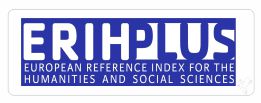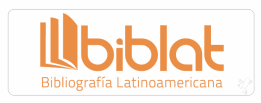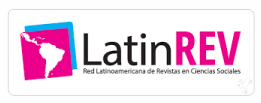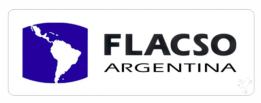Designing and assessing virtual learning objects to foster english for specific purposes in higher education
DOI:
https://doi.org/10.34069/RA/2023.11.02Palabras clave:
Virtual Learning Scenarios (VLS), English learning, English for Specific Purposes (ESP), University English Courses (UEC), Educational Technology.Resumen
Four Virtual Learning Objects (VLO) were designed to incorporate English for Specific Purposes (ESP) learning at a public university in Colombia. Each VLO comprised a series of Virtual Learning Scenarios (VLS), including a vocabulary bank, a set of activities related to the six linguistic competencies (listening comprehension, oral interaction, oral production, reading comprehension, writing production, writing interaction), and an assessment and feedback sections. The impact of the VLO on students' perceptions of their progress was measured through entry and exit surveys composed of a 5-point Likert scale, multiple choice and open-ended questions. 139 students from Software Engineering (18), Journalism (22), Bachelor of Arts in Natural Sciences (50) and Nursing (49) enrolled in the University English Courses (UEC) and five teachers participated. The results reveal that students' perceptions of the VLS are positive, as each VLO is innovative and motivates learning strategies. Additionally, each VLO improved students listening and speaking skills. Therefore, the researchers recommend that teachers who design and implement VLOs focus on providing their students with skills and knowledge necessary to their specific study fields.
Descargas
Citas
Albarracín, C. Z., Hernández, C. A., & Rojas, J. P. (2020). Using Virtual Learning Objects to Develop Numeracy Skills: An Experience with Basic Education Students. Panorama, 14(26), 111–133. https://doi.org/10.15765/pnrm.v14i26.1486
Aparicio, M., Bacao, F., & Oliveira, T. (2016). An e-Learning Theoretical Framework. Educational Technology & Society, 19(1), 292–307.
Apuke, O. (2017). Quantitative Research Methods: A Synopsis Approach. Arabian Journal of Business and Management Review (kuwait Chapter), 6, 40-47. https://doi.org/10.12816/0040336
Azza, B.N.E.I. (2013). ESP Material Selection: The case of Second Year Computer Science Students of Ouargla University. (Doctoral dissertation). Kasdi Merbah Ouargla University. Algeria.
British Council. (2013). The English effect: The impact of English, what it’s worth to the UK and why it matters to the world. Retrieved from https://www.britishcouncil.org/sites/default/files/english-effect-report-v2.pdf
Bossman, A., & Agyei, S. (2022). Technology and instructor dimensions, e-learning satisfaction, and academic performance of distance students in Ghana. Heliyon, (8)4. https://doi.org/10.1016/j.heliyon.2022.e09200
Carroll, L.S.L. (2017). A Comprehensive Definition of Technology from an Ethological Perspective. Soc. Sci, 16(126), 1-20. https://doi.org/10.3390/socsci6040126
Chiappe, A. (2011). Diseño de Contenidos Educativos para Dispositivos Móviles. Berlin: LAP LAMBERT Academic Publishing GmbH & Co.KG.
Chiappe, A. (2016). Tendencias sobre contenidos educativos digitales en América Latina. París: UNESCO. Available at: http://www.siteal.iipe-oei.org
Davies, R, & West, R. (2014). Technology integration in schools. In Handbook of research on educational communications and technology (4th ed.), pp. 841–853. New York: Springer.
Falcão, E.M, de Moraes, M., & Rossato, J. (2016). Evaluation of Virtual Objects: Contributions for the Learning Process. International Review of Research in Open and Distributed, 17(6), pp. 1-228
Gonzáles, O, & Fernández F. (2019). Empowering Student Teachers and In-Service Teachers in the Creation of Open Educational Resources through the DSP-SCORM Package Strategy. ICT experiences in Surcolombiana University: classroom research systematization in initial and teacher training. (pp. 65-79). Editorial Universidad Surcolombiana.
Hall, T. (2020). Bridging Practice and Theory: The Emerging Potential of Design-based Research (DBR) for Digital Innovation in Education. Education Research & Perspectives, 47(1).
Hew, K.F., Brush, T. (2007). Integrating technology into K-12 teaching and learning: current knowledge gaps and recommendations for future research. Education Tech Research Dev, 55 (3), 223–252. https://doi.org/10.1007/s11423-006-9022-5
Hernández Urrego, S. C. (2019). A Virtual Learning Object (VLO) to Promote Reading Strategies in an English for Specific Purposes Environment. HOW Journal, 26(2), 106-122. https://doi.org/10.19183/how.26.2.517
Hodgins, W. (2002). The Future of Learning Objects. In e-Technologies in Engineering Education: Learning Outcomes Providing Future Possibilities, Jack R. Lohmann, Georgia Institute of Technology, USA; Michael L. Corradini, University of Wisconsin-Madison, USA Eds, ECI Symposium Series. https://dc.engconfintl.org/etechnologies/11
IEEE. (2002). IEEE Standard for Learning Object Metadata. IEEE Std 1484.12.1-2002, 1-40. https://doi.org/10.1109/IEEESTD.2002.94128
K?rkgöz, Y. (2019). ESP in teacher education: a case study. In S. Papadima-Sophocleous. ESP teaching and teacher education: current theories and practices (pp.13-26). Research-publishing.net. https://doi.org/10.14705/rpnet.2019.33.923
Laurence, A. (1997). English for specific purposes: What does it mean? Why is it different? Laurenceanthony.net Retrieved October 10, 2022 from https://www.laurenceanthony.net/abstracts/ESParticle.html
Maheshwari, G. (2021). Factors affecting students’ intentions to undertake online learning: an empirical study in Vietnam. Educ Inf Technol, 26, 6629–6649. https://doi.org/10.1007/s10639-021-10465-8
Ministerio de Educación Nacional (MEN). (2007). Portal Mineducación. La red del conocimiento. Retrieved October 10, 2022 from https://www.mineducacion.gov.co/portal/secciones/Glosario/82739:OBJETOS-VIRTUALES-DE-APRENDIZAJE-OVA
Morales, L., Gutiérrez, L., & Ariza, L. (2016). Guía para el diseño de objetos virtuales de aprendizaje (OVA). Aplicación al proceso enseñanza-aprendizaje del área bajo la curva de cálculo integral. Rev. Cient. Gen. José María Córdova, 14(18), 127-147 https://doi.org/10.21830/19006586.46
Nesbit, J., Belfer, K., & Leacock, T. (2009). Learning Object Review Instrument (LORI) 2.0. [FILE PDF] Retrieved from: https://www.academia.edu/7927907/Learning_Object_Review_Instrument_LORI_
Piccoli, G., Ahmad, R., & Ives, B. (2001). Web-Based Virtual Learning Environments: A Research Framework and a Preliminary Assessment of Effectiveness in Basic IT Skills Training. MIS Quarterly, 25(4), 401-426. https://doi.org/10.2307/3250989
Pinto, M., Gómez-Camarero, C., Fernández-Ramos, A., & Doucet, A. (2017). Evaluareed: Development of an online educational resources assessment instrument. Investigación bibliotecológica, 31(72), 227-248. https://doi.org/10.22201/iibi.0187358xp.2017.72.57831
Prensky, M. (2001). Digital Natives, Digital Immigrants. On the Horizon, 9(5), 1-6. https://doi.org/10.1108/10748120110424816
Raja, R., & Nagasubramani, P. (2018). Impact of modern technology in education. Journal of Applied and Advanced Research, 3(1), 33-35. https://doi.org/10.21839/jaar.2018.v3iS1.165
Singh, G.K.G., & Singh, S.K.G. (2008). Malaysian graduates’ employability skills. Unitar E-Journal, 4(1), 14-44.
Soler, B., Villacañas, L. S., & Pich, E. (2013). Creating and implementing a didactic sequence as an educational strategy for foreign language teaching. Ikala, revista de lenguaje y cultura, 18(3), 31–43.
Sue, V. M., & Ritter, L. A. (2007). Conducting online surveys. SAGE Publications, Inc., https://dx.doi.org/10.4135/9781412983754
Tahir, M. M. (2009). English for Specific Purposes (ESP) and syllabus design. Journal of College of Languages, 20, 71-131.
Tovar, I. (2004). Los Objetos Virtuales de Aprendizaje y su impacto en la calidad del proceso de la calidad del proceso de virtual. Revista de Tecnología de Información y Comunicación en Educación, 8(1), 113-126. https://doi.org/10.15765/pnrm.v14i26.1486
Wiley, D. (2002). The Instructional Use of Learning Objects. Agency for Instructional Technology Association for Educational Communications & Technology. First Edition. Bloomington, Indiana.


























